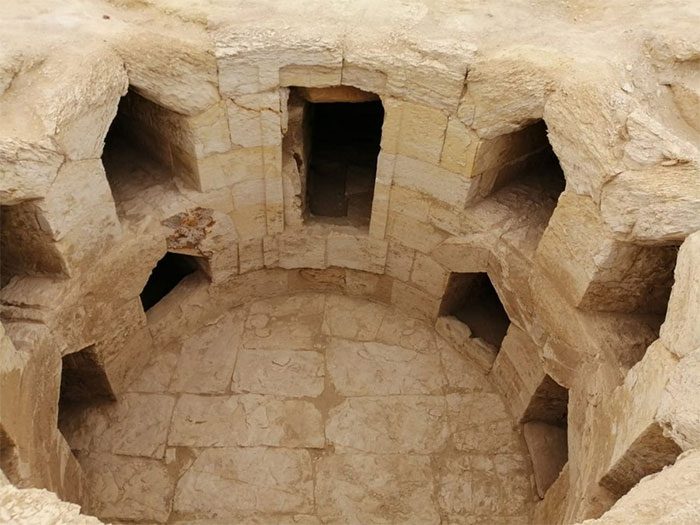Officials from the Egyptian Antiquities Authority announced that the foundation of the funeral house dates back to the Ptolemaic and Roman periods, constructed with colored mortar and adorned with multicolored tiles.
On December 1, the Egyptian archaeological delegation reported the discovery of a large funeral structure dating back to the Ptolemaic and Roman periods at the Garza archaeological site in the city of Fayoum.

Funeral house dating back to the Ptolemaic and Roman periods. (Source: Egyptian Ministry of Tourism and Antiquities).
This marks the 10th excavation season for the Egyptian archaeological team at Garza since 2016.
Garza village, formerly known as Philadelphia village, was established in the 3rd century BC as part of an agricultural reclamation project initiated by King Ptolemy II in the Fayoum region.
The establishment of this village aimed to secure food supplies for the kingdom of Egypt as well as for the Greek and ancient Egyptian populations.
Adel Okasha, head of the Egyptian Antiquities Authority in Central Egypt, stated that the foundation of the funeral house was built with colored mortar and decorated with multicolored tiles.
Additionally, archaeologists discovered four pillars in the vicinity of this funeral structure.
According to Okasha, apart from the aforementioned funeral house, the Egyptian archaeological team also uncovered several portraits, commonly referred to as Fayoum portraits.
Okasha affirmed that these are the first portraits discovered since British archaeologist Flinders Petrie unearthed similar artifacts in 1907, making this one of the most valuable archaeological discoveries of this excavation season.
Meanwhile, Basem Jihad, head of the Egyptian archaeological delegation, noted that during the excavation at Garza, the team discovered several coffins in the style of ancient Egyptian and Greek design.
Jihad further mentioned that the new findings, along with many previous discoveries at this archaeological site, indicate a blend of architecture and artifacts from both the ancient Egyptian and Greek civilizations.





















































